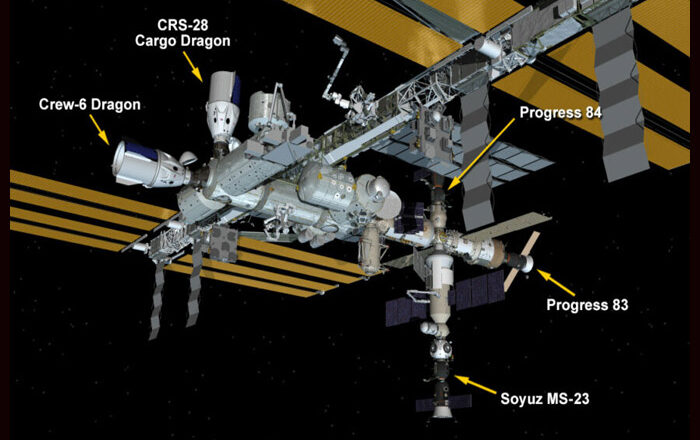SpaceX Dragon Cargo Spacecraft Docks To international Space Sation
While the International Space Station was traveling approximately 270 miles over the coast of Brazil, a SpaceX Dragon cargo spacecraft autonomously docked to the station’s Harmony module, with NASA astronaut Woody Hoburg monitoring operations.
The SpaceX Dragon launched as part of the company’s 28th contracted commercial resupply services mission for NASA on Monday from the US space agency’s Kennedy Space Center in Florida. The Dragon will spend about three weeks attached to the space station before it returns to Earth with cargo and research.
The SpaceX Dragon has delivered a pair of IROSAs (International Space Station Roll Out Solar Arrays) that, once installed, will expand the energy-production capabilities of the microgravity complex.
A number of science experiments will be conducted aboard the space station.
An investigation from the European Space Agency, called Thunderstorm Watch, observes thunderstorms from the space station.
Plants exposed to environmental stress, including spaceflight, undergo changes to adapt, but those changes may not be passed on to the next generation. Plant Habitat-03 (PH-03) assesses whether plants grown in space can transfer such adaptations to the next generation and, if so, whether a change continues through subsequent generations or stabilizes.
Genes in Space-10 tests a technique for measuring telomere length in microgravity, where methods typically employed on Earth are difficult to use due to gravity. The experiment explores whether telomere lengthening in space is caused by proliferation of stem cells — undifferentiated cells that give rise to specific body components and that typically have long telomeres.
Genes in Space is a national contest for students in grades 7 through 12 to design biotechnology experiments for space. The program is sponsored by miniPCR, Math for America, Boeing, New England Biolabs Ltd., and the ISS National Laboratory.
Mission 26 for the station’s Nanoracks CubeSat Deployer (NRCSD) includes Educational Space Science and Engineering CubeSat Experiment Mission (ESSENCE), sponsored by the ISS National Laboratory and developed by universities in Canada and Australia. It carries a wide-angle camera to monitor thawing of ice and permafrost in the Canadian Arctic, which could provide a better understanding of the effects on Earth’s climate and support better local infrastructure planning.
Source: Read Full Article

